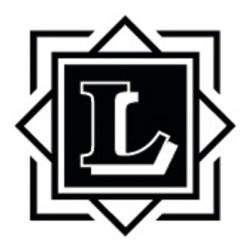Analysis
Mrs Green ran a business known as Flagstaff Holidays (the business) which let five units of self-contained holiday accommodation in a property known as Flagstaff House, Burnham Overy Staithe, King’s Lynn, Norfolk (the property). Mrs Green had bought the property for £900,000 in 2003. Between 2009-2012, the property was let for a total of around 650 to 750 nights a year. At all relevant times, Mrs Green lived in Woodbridge, Suffolk. On 2 February 2010, the property was valued by a firm of estate agents at £1.9m on a vacant possession basis.
On 5 April 2010, Mrs Green settled 23% of the property into a settlement known as the Mrs ACC Green Settlement (the trust). The trust deed stated that the remaining 77% was held by Mrs Green subject to the mortgage of £250,000. On 22 November 2010, an IHT 100 was filed stating that Mrs Green had made a chargeable transfer of £341,550 (the first transfer), consisting of an interest in a business and that this had been calculated as follows:
- (1) The total equity in the property was £1,650,000.
- (2) The first transfer was 23% of that figure, being £379,500.
- (3) Because the trustees owned only part of the property, the £379,500 was further reduced by 10% to arrive at the £341,550 included on the IHT 100.
Mrs Green claimed business property relief (BPR) at 100% on the basis that the business was one of short term letting holidays involving management of bookings and preparation of units for weekly and short term lets. Interest comprises 23% interest in Flagstaff House.
She later accepted that the transfer value of the first transfer had been understated because it did not take account of the fact that she had retained responsibility for the whole of the mortgage, nor had it been valued on the ‘loss to the estate’ principle: in other words, the value of the remaining 77% had to be further reduced because the ownership of the property was shared. The parties subsequently agreed that the value transferred on the first transfer was £583,000 rather than £341,550 on the IHT 100.
On 12 August 2010, Mrs Green entered into a deed of partnership (the partnership deed) with the trustees. On 2 April 2012, Mrs Green transferred (the second transfer) a further 62% of the property to the trust, retaining responsibility for the mortgage. The deed said that the trustees now owned 85% of the property, and Mrs Green 15%, subject to the mortgage. A further IHT 100 was filed on Mrs Green’s behalf, declaring a chargeable transfer of £1,060,200, taking into account the fact that the mortgage had remained with Mrs Green, and applying a 10% discount to the value transferred. BPR was claimed at 100% on the same basis as before.
Mrs Green contended that the first and second transfers were subject to 100% BPR under the Inheritance Tax Act 1984, Part V, Chapter 1 as being ‘relevant business property’. HMRC accepted that Mrs Green was ‘carrying on a business’ but decided that the transfers did not qualify for BPR because the business consisted ‘mainly’ of holding or making investments. Mrs Green appealed that decision and subsequently notified her appeal to the tribunal.
Held:
- 1) The correct approach was to decide whether the business was ‘mainly’ investment. It had to consider the issue ‘in the round’ and had to establish the ‘preponderance of business activity’.
- 2) Activities such as marketing, pricing, booking accommodation, dealing with complaints and requests, insurance, repairs and maintenance fell on the investment side of the line, in accordance with HMRC v George [2004] WTLR 75 and HMRC v Pawson [2013] WTLR 469.
- 3) On the non-investment side were activities relating to the provision of electricity, the provision of a welcome pack, the provision of linen, towels furniture, equipment and wi-fi as well as cleaning. Those were relatively minor and ancillary to the provision of the accommodation.
- 4) The scale of the property was not a relevant factor: the number of units and the amount of income did not change the statutory analysis. The relevant test was not the degree or level of activity, but rather the nature of the activities which were carried out.
- 5) Unlike in Brander v HMRC [2009] WTLR 1117, there was not farming, forestry, woodland or sporting activities in the business. The letting of units was not ancillary to other activities. On the contrary, the other activities, such as cleaning and provision of equipment, were ancillary to the property letting.
- 6) The extra services were therefore insufficient to demonstrate that the business was anything other than ‘mainly’ one of holding the property as an investment.
- 7) Mrs Green’s appeal was therefore dismissed.
Continue reading "Curtis Green v HMRC [2015] UKFTT 0236 (TC)"

